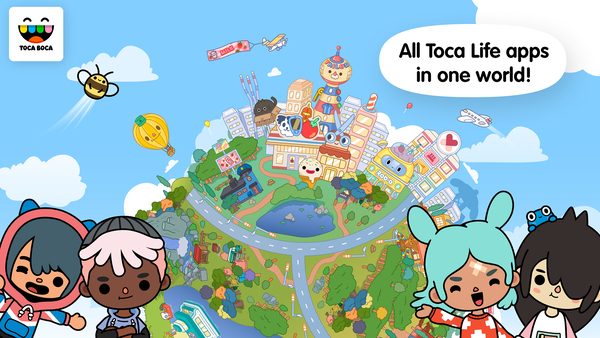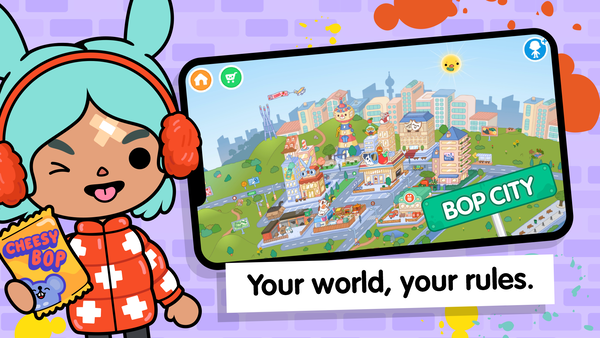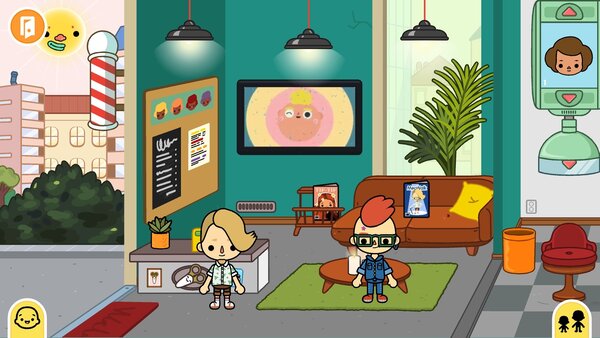Advertisement
Popular Now
Toca Life is celebrated for its open-ended play and storytelling possibilities, giving players the freedom to craft imaginative narratives. But within this freedom lies a unique challenge: managing emotional storytelling, particularly scenarios involving conflict and resolution. As players explore themes like arguments, mistakes, and reconciliations, they may struggle to balance the emotional depth of these stories with the lighthearted tone of the game. This article delves into this nuanced issue, offering insights into how players can better navigate emotional storytelling in Toca Life.
 Version 1.0.0[/caption]
Version 1.0.0[/caption]
Tips for Balancing Drama and Fun
Understanding Emotional Storytelling in Toca Life
What Is Emotional Storytelling?
Emotional storytelling involves crafting narratives that explore relationships, emotions, and character growth.- Why It’s Important: It helps players understand empathy, problem-solving, and the complexity of human interactions.
- Relevance in Toca Life: With diverse characters and interactions, the game naturally lends itself to emotional narratives.
The Challenges of Conflict in Open-Ended Play
Conflict Without Structure
Toca Life offers no scripted scenarios, leaving players to create their own conflicts and resolutions.Common Challenges:
- Unrealistic Conflicts: Players may struggle to design believable disagreements.
- Overly Simplistic Resolutions: Conflicts often end too quickly, lacking depth or impact.
Exploring How Players Handle Mistakes
Managing Mistakes in Gameplay
When characters “misbehave” or make mistakes, players must decide how to resolve these issues.Examples of Common Mistakes:
- A character accidentally ruining a birthday party.
- Misplacing or breaking another character’s belongings.
The Impact on Storytelling
Unresolved mistakes can create chaotic narratives, while well-managed ones foster engaging stories.The Role of Relationships in Emotional Storytelling
[caption id="attachment_1306" align="aligncenter" width="600"] Version 1.0.0[/caption]
Version 1.0.0[/caption]
Building Meaningful Interactions
Relationships between characters drive the emotional depth of Toca Life.Key Dynamics to Explore:
- Friendships: How friends support each other during challenges.
- Family Ties: Handling sibling rivalries or parent-child misunderstandings.
- Community Interactions: Resolving disputes in shared spaces like schools or parks.
Strategies for Creating Realistic Conflict
Designing Believable Scenarios
Players can enhance their emotional storytelling by focusing on relatable conflicts.Steps to Create Realistic Conflict:
- Base conflicts on everyday situations (e.g., sharing toys, helping with chores).
- Use character traits to shape disagreements (e.g., a shy character avoids confrontation).
Resolving Conflict: Turning Drama into Growth
Steps to Effective Conflict Resolution
Conflict resolution in Toca Life can teach valuable lessons about cooperation and understanding.Key Steps:
- Acknowledge the Issue: Characters should express their feelings.
- Propose Solutions: Allow different characters to suggest ways to fix the problem.
- Celebrate Resolution: End with a positive action, like a hug or a group activity.
How Parents and Educators Can Guide Emotional Play
Supporting Emotional Growth Through Gameplay
Parents and educators can help children navigate emotional themes in Toca Life.Tips for Support:
- Discuss Feelings: Talk about how characters might feel in certain scenarios.
- Model Resolution Skills: Demonstrate ways to resolve disagreements constructively.
Developer Opportunities: Enhancing Emotional Depth
Adding Tools for Emotional Storytelling
Toca Boca developers could integrate features to enrich emotional narratives.Suggested Features:
- Dialogue Prompts: Offer optional dialogue options to guide emotional interactions.
- Emotional Indicators: Add visual cues to show characters’ emotions (e.g., sad faces, angry gestures).
Success Stories: Emotional Storytelling in Action
Player Experiences with Emotional Depth
Many players have created compelling emotional narratives within Toca Life.Case Study: A Friendship Story
One player shared how they used Toca Life to resolve a fictional friendship conflict, teaching empathy and forgiveness along the way.Tips for Balancing Drama and Fun
Keeping Emotional Play Engaging
While conflict adds depth, it’s important to maintain the lighthearted essence of Toca Life.Tips for Balance:
- Alternate between dramatic and fun scenes.
- Use humor to lighten tense moments.
- Ensure all conflicts have satisfying resolutions.























